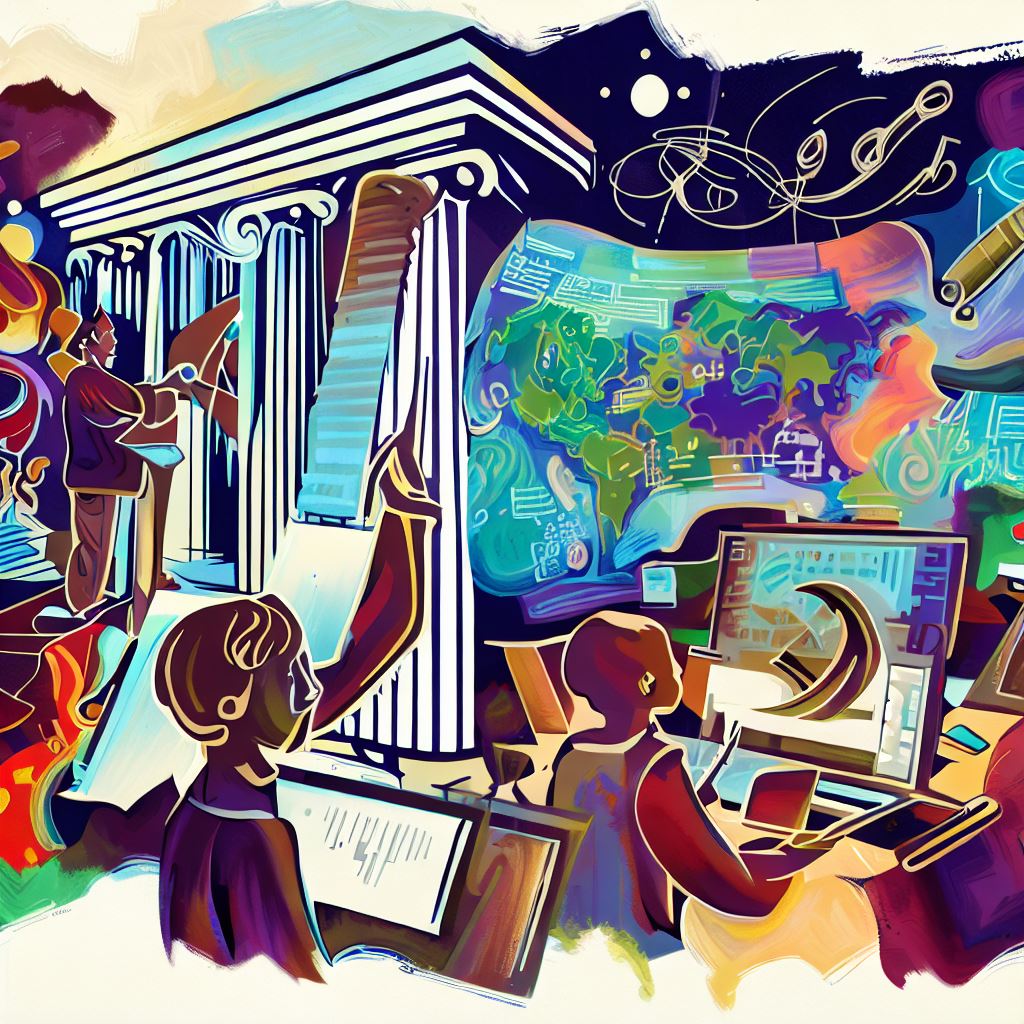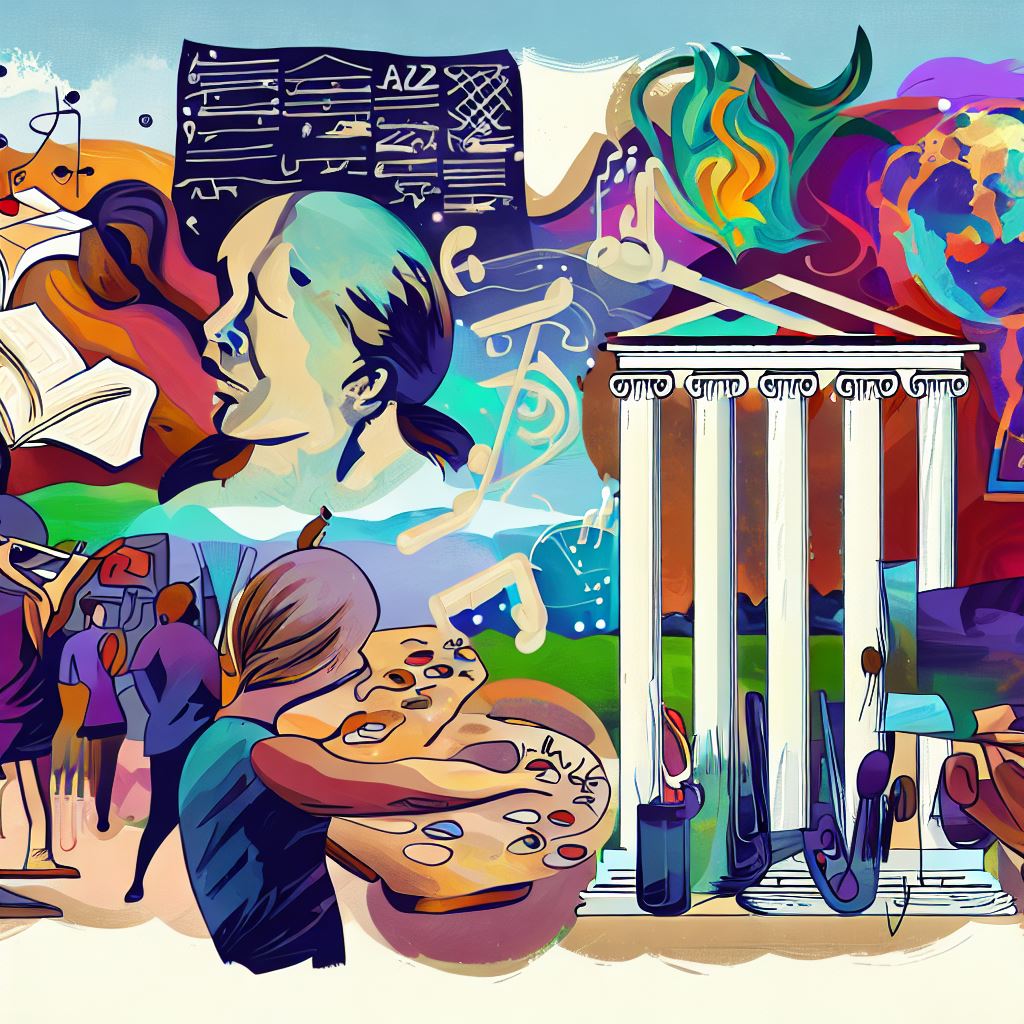
The Transformative Power of Art and Music in Education
In today's fast-paced, technology-driven educational settings, there's a renewed call for integrating art and music into the curriculum. This integration is seen not merely as an enrichment activity but as a crucial element for students' holistic development. This article delves into the significant role that art and music play in education by presenting historical perspectives, psychological benefits, current trends, and case studies that demonstrate the profound impact on students' cognitive growth and well-being.
Historical Perspective on Art and Music in Education
Historically, art education and music in schools have always been a significant part of human civilization.
- Ancient Greece emphasized "Aesthetic learning," where artistic teaching was integral.
- In medieval times, the church used art and music as a medium for religious teachings.
- Renaissance saw the flourish of musical pedagogy and creative curriculum inspired by humanistic ideas.
This rich history underscores that art and music have always been more than mere subjects. They have been avenues to express, understand, and connect with the world.
Psychological Benefits of Art and Music for Students
"Art and music have the power to touch the soul and heal the psyche," says Dr. Julianne, a renowned psychologist. Here's why:
Importance of Art in Cognitive Development
- Critical Thinking: Art education encourages students to think outside the box.
- Motor Skills: Activities like drawing and painting enhance fine motor skills.
- Cultural Awareness: Through art, students get exposed to different cultures, fostering a sense of global citizenship.
Music's Influence on Learning Outcomes
- Brain Development: Music strengthens the neural connections, especially in the areas related to reading and math.
- Emotional Intelligence: Recognizing and understanding emotions in music can lead to better emotional regulation in students.
- Concentration and Focus: Learning to play a musical instrument increases attention span and concentration.
Current Trends in Integrating Art and Music in Curricula
Contemporary educators recognize the benefits of a creative curriculum. It's not just about adding an art or music class but ensuring they're an integral part of the learning process.
- Interdisciplinary Approach: Integrating art and music with other subjects like science or history to offer a richer learning experience.
- Technology Integration: Using tech tools and apps for creating art or making music.
- Project-based Learning: Encouraging students to take up art and music projects, fostering a deep sense of accomplishment.
Holistic Development Through Arts in Schools
Art and music cater to the emotional, social, and cognitive aspects of a child. This holistic development is evident in:
- Enhanced self-esteem and confidence.
- Improved interpersonal skills.
- Greater cultural empathy and understanding.

Case Studies on Art and Music in Education
- Greenwood Elementary School: By integrating art into their math curriculum, students showed a 15% increase in their test scores.
- St. Helena's School: Introduction of a mandatory music program resulted in a noticeable decline in classroom disruptions and improved student-teacher relationships.
These case studies validate the transformative power of curriculum integration with art and music.
Expert Opinions on the Future of Art and Music in Education
Many educational policymakers and art and music educators believe that the future of education lies in a balanced curriculum. Prof. Emily Davidson, a proponent of artistic teaching, states, "As we move into an era dominated by AI and robotics, our salvation lies in nurturing creativity, and what better way than through arts?"
Key Takeaways:
- Art and music are pivotal for the cognitive and emotional growth of students.
- The integration of these subjects into the curriculum results in improved learning outcomes.
- Schools and educators need to champion the cause of a more musical pedagogy and an enriched curriculum.
To all educators, school administrators, parents, and policymakers: Let's come together to champion a cause that not only enhances the educational experience but nourishes the soul. With the evidence supporting the positive outcomes of integrating art and music in the curriculum, it's high time we prioritize these subjects to ensure our students receive a well-rounded and holistic education.
The Symphony of Learning: Lila's JourneyLila was a curious 10-year-old, but her school felt like a monochrome world. Every day, it was the same routine of reading, writing, and arithmetic. The walls of her classroom were adorned with numbers and alphabets, but they felt devoid of life. One day, as Lila walked to school, she stumbled upon a peculiar-looking stone, shimmering with colors she'd never seen before. She pocketed the stone, unaware that it would change her life. The next morning, the classroom transformed. Instead of plain walls, there were ancient Greek columns. The corner where equations once dominated now had easels with students painting vibrant worlds. Lila could hear the soft strumming of a guitar, the tap of dancing feet, and the melodious hum of voices singing in harmony. Mrs. Turner, their usually strict math teacher, was teaching fractions using a beautiful piece of music. By breaking down the musical notes, Lila not only grasped the concept of fractions but felt a connection to the lesson unlike ever before. Lila's once quiet friend, Ethan, was now narrating historical tales while sketching scenes that transported the entire class to ancient civilizations. The neural connections in Lila's brain felt alive, lighting up like a bustling city at night. During geography, the class used art to showcase different cultures. As Lila painted, she realized that art wasn't just about colors but understanding and empathy. Every brushstroke felt like a step closer to people and places far away. One evening, Lila's mother, intrigued by the change in her daughter's enthusiasm for school, attended a parent-teacher meeting. She learned about the new approach to integrate art and music into the curriculum. The school had recognized the power of aesthetic learning for cognitive growth and holistic development. They shared stories of increased test scores, happier classrooms, and the joy of watching children like Lila blossom. As years went by, the shimmering stone Lila had found faded away, but the magic it brought to her life stayed. Lila's school became a beacon for educators worldwide, exemplifying the transformative power of art and music in education. Today, Lila is a teacher herself, and in her classroom, you'll find musical notes alongside equations, history interwoven with art, and most importantly, students who are excited to learn. Because she knows, as her journey taught her, that when you blend art and music with education, learning becomes a symphony. |



